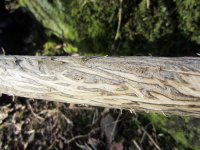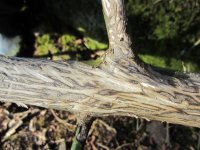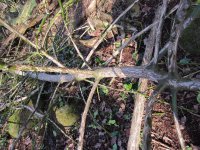Nick Tonge
Well-known member
Yesterday, in a local wood (Bradford West Yorkshire, UK) our wildlife youth group found these really interesting scratches (tooth marks?) on the several branches of a holly tree that had been cut down. I assumed this was the work of a Grey Squirrel - we'd seen these around the wood - but after consulting my trusty copy of Tracks and Signs by Bang and Dahlstrom, I'm not so sure. Any ideas?
For reference, each scratch is around 5mm wide, and covered almost every inch of the fallen tree. The adjacent standing holly tree appeared untouched.
Thanks
For reference, each scratch is around 5mm wide, and covered almost every inch of the fallen tree. The adjacent standing holly tree appeared untouched.
Thanks







